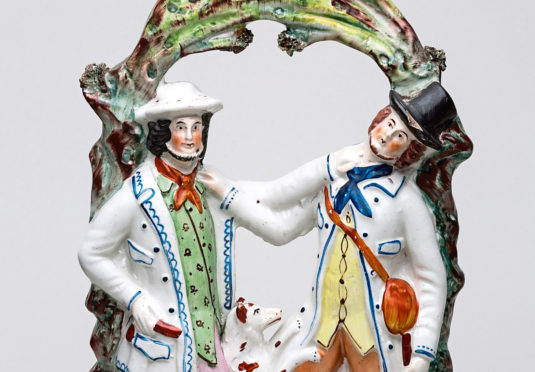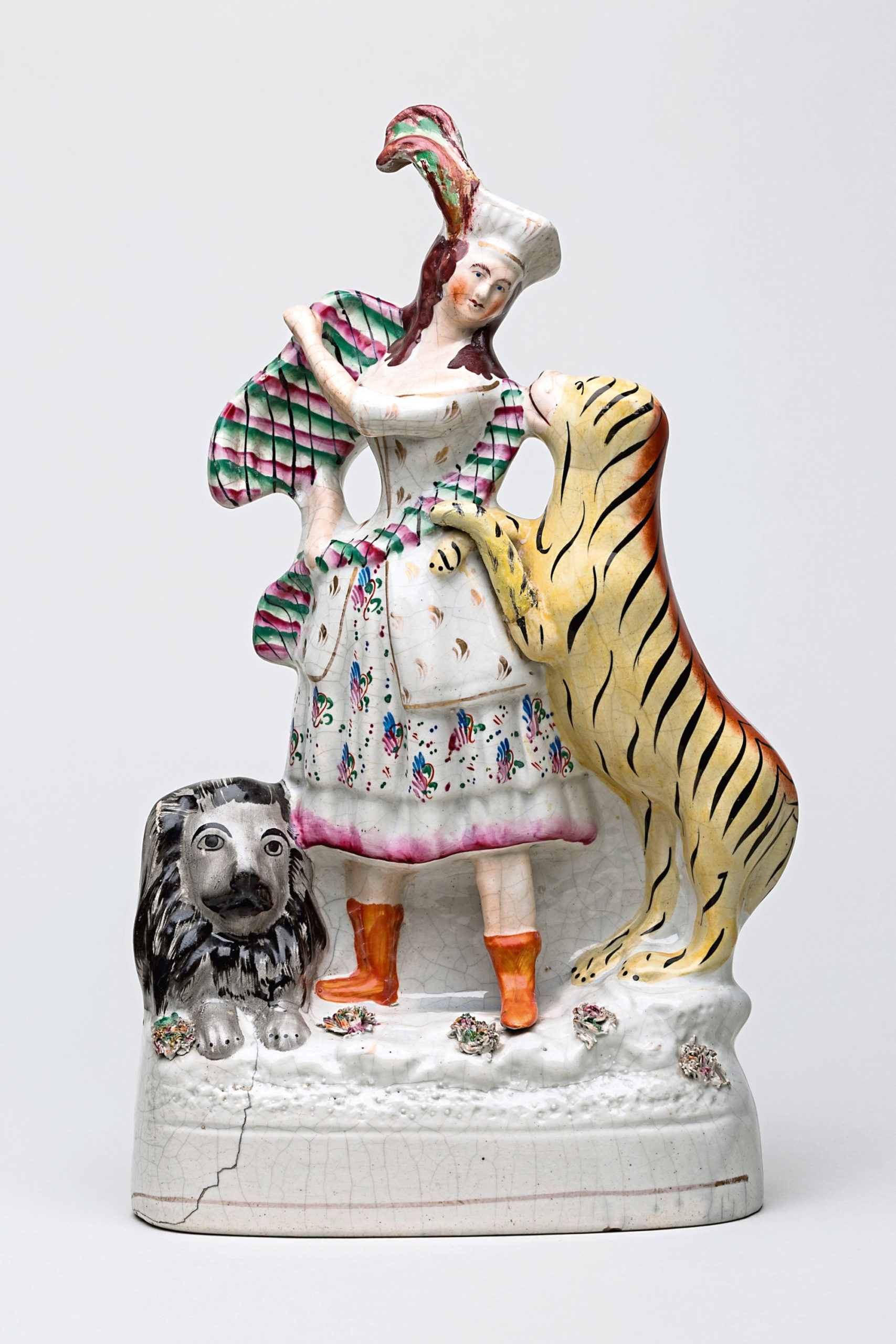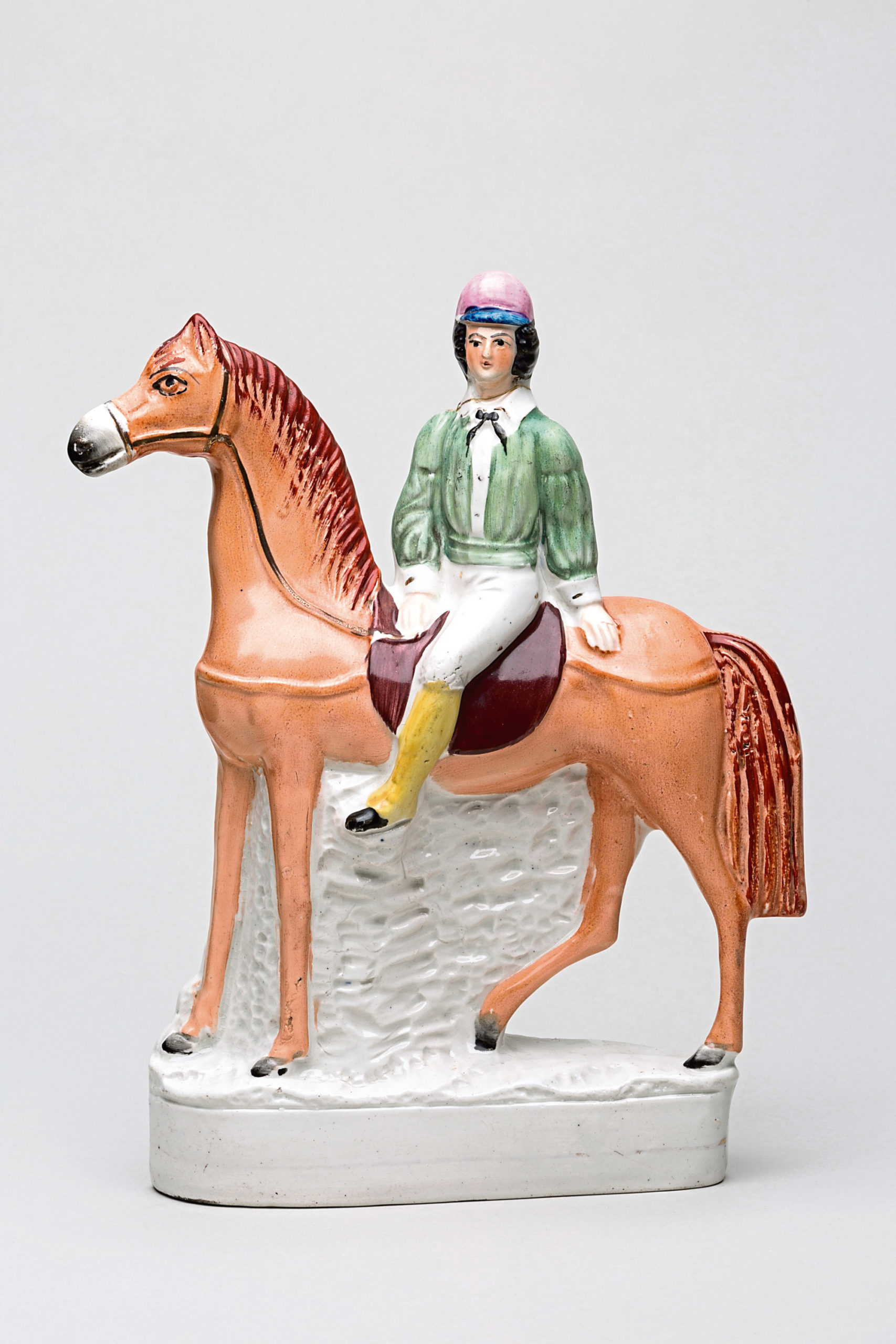Several important donations enriched our ceramic collections in the 1990s, including the flatback figures from the Catherine Fleming Collection.
Flatback figures may evoke feelings of nostalgia, or maybe tame kitsch at worst, but in their day these figures were edgy.
From the late 18th century onwards the Staffordshire potteries produced flatback figures. Subjects included religious figures, celebrities, sporting heroes, newspaper stories, current events and fairy tales.
Some subjects were definitely not for the faint-hearted: imagine receiving the gift of a figurine that portrayed a murder or showed a gruesome circus attack?
The technology to mass-produce imagery did not exist in the way it does today and at the time consumers were starved for affordable artwork and decorative objects for their homes.
These cheap earthenware ornaments helped the British middle-classes express their personal tastes and interests.
17-year-old Ellen Bright was known as the Lion Queen. She thrilled audiences by taming wild cats.
During one performance at Wombell’s Circus in 1850, she turned her back on a tiger and the animal pounced, seizing her by the throat. Following an inquest into her death the practice of ‘Lion Queens’ was banned and only men were allowed into the cages.
Frederick James “Fred” Archer was an English flat race jockey who was the most successful sportsman in horse racing during the Victorian era.
He won 13 Champion Jockey titles consecutively until 1886. He set records with 2,748 race wins during his career and with 246 wins in a season.
His record went unchallenged until 1943, when Sir Gordon Richards surpassed Archer’s achievements.
This double flat-back figure represents the murder of Thomas Smith by William Collier at Kingsley, Staffordshire, in 1866. Smith was shot, then beaten to death with the gunstock.
Collier was a well-known poacher and he was the obvious suspect. The murder weapon was found hidden in a drainpipe near Collier’s home.
The ceramic figures are set against an arch of foliage with their arms extended to each other’s necks as in a struggle. William Collier’s poached game can be seen at their feet and the murder weapon is poised in his hand, ready to make the fatal blow.
Aberdeen Art Gallery & Museums:
- Aberdeen Art Gallery (reopening autumn 2019)
- Aberdeen Maritime Museum (open 7 days, admission free)
- The Tolbooth Museum (open 7 days, admission free)
- Aberdeen Treasure Hub Museum Centre
For visiting information go to www.aagm.co.uk
Keep up to date with all the latest news from Aberdeen Art Gallery & Museums by signing up to our e-newsletter at www.aagm.co.uk/mailinglist
Follow us on Facebook, Twitter and Instagram @AbdnArtMuseums


